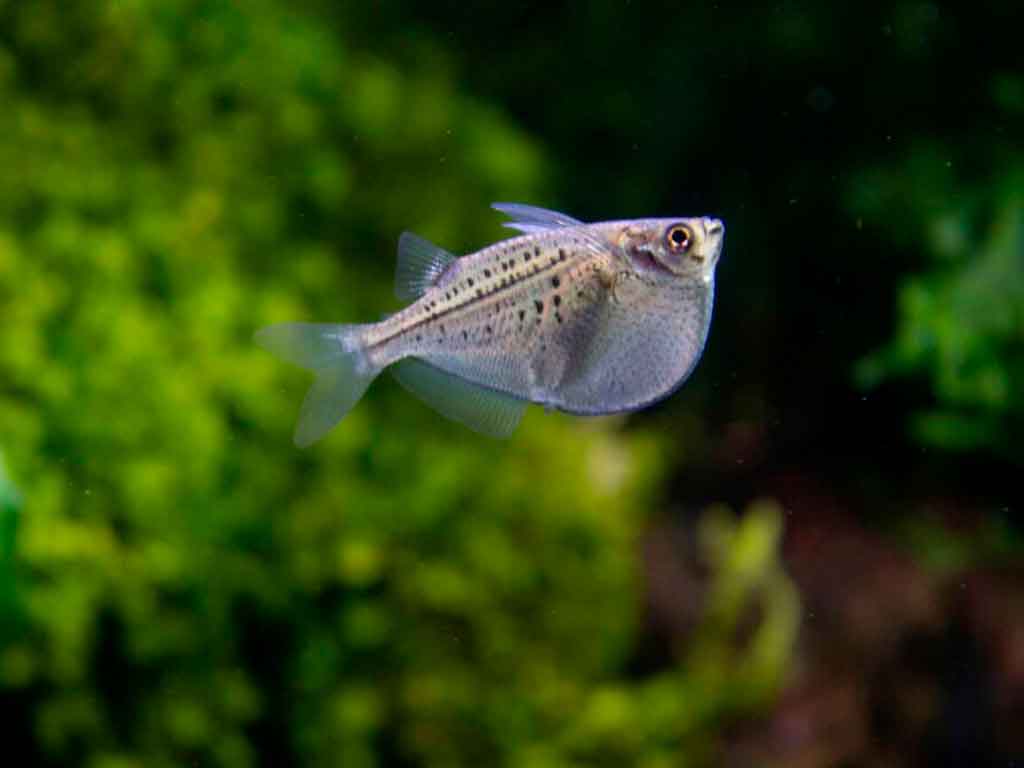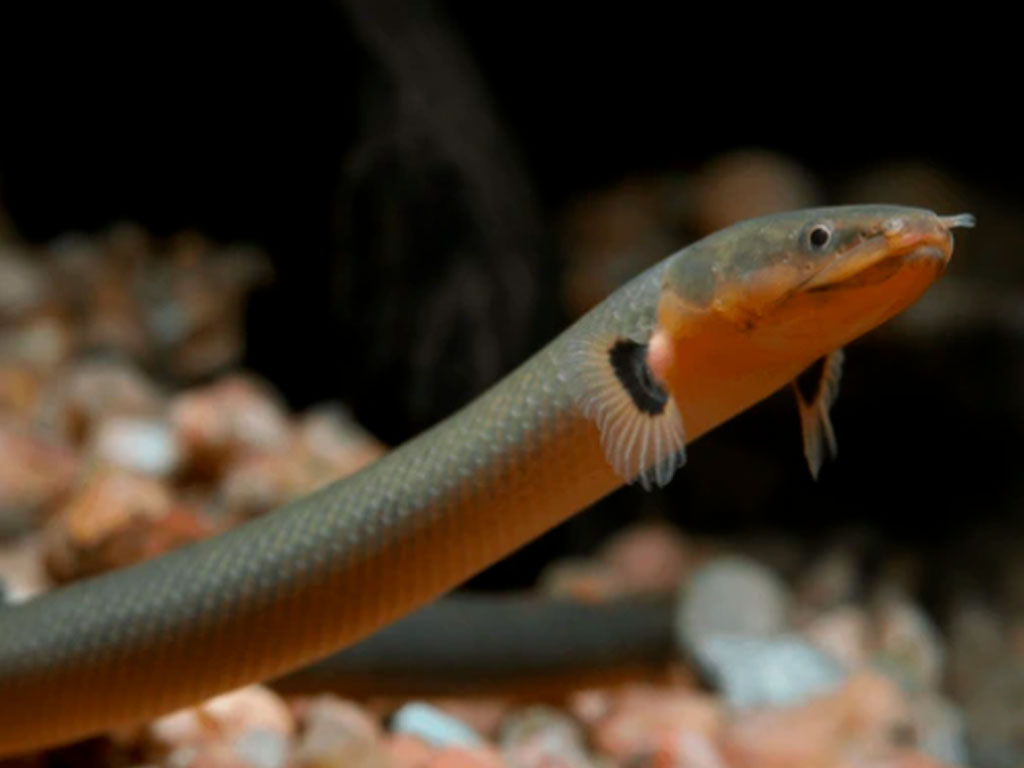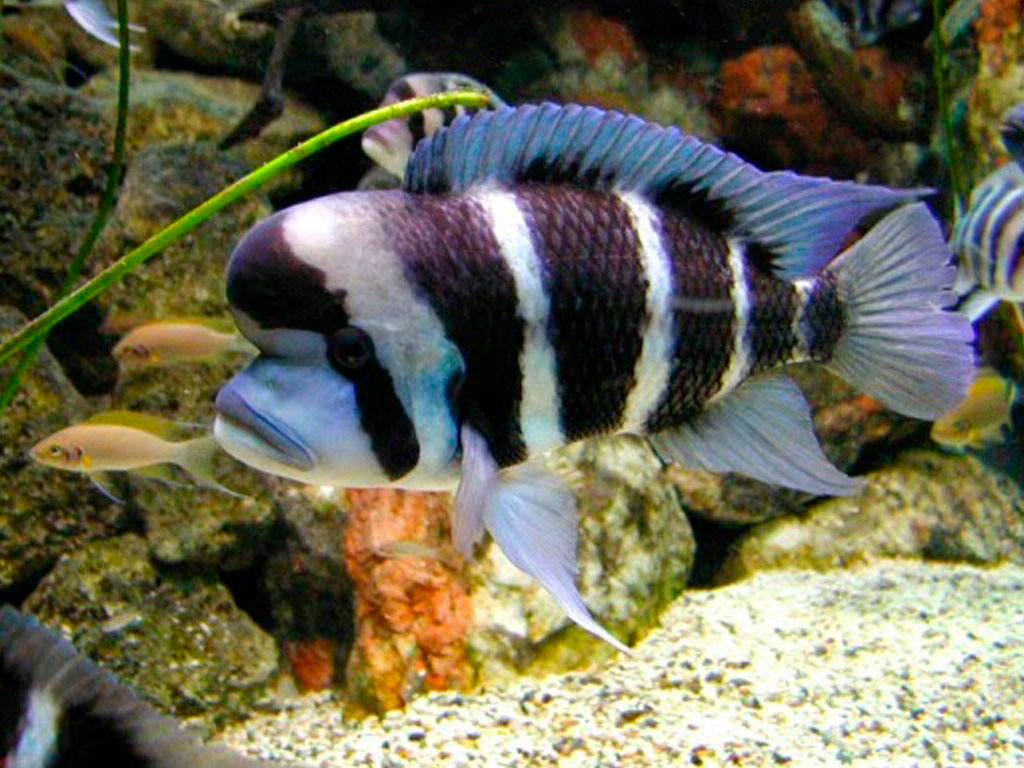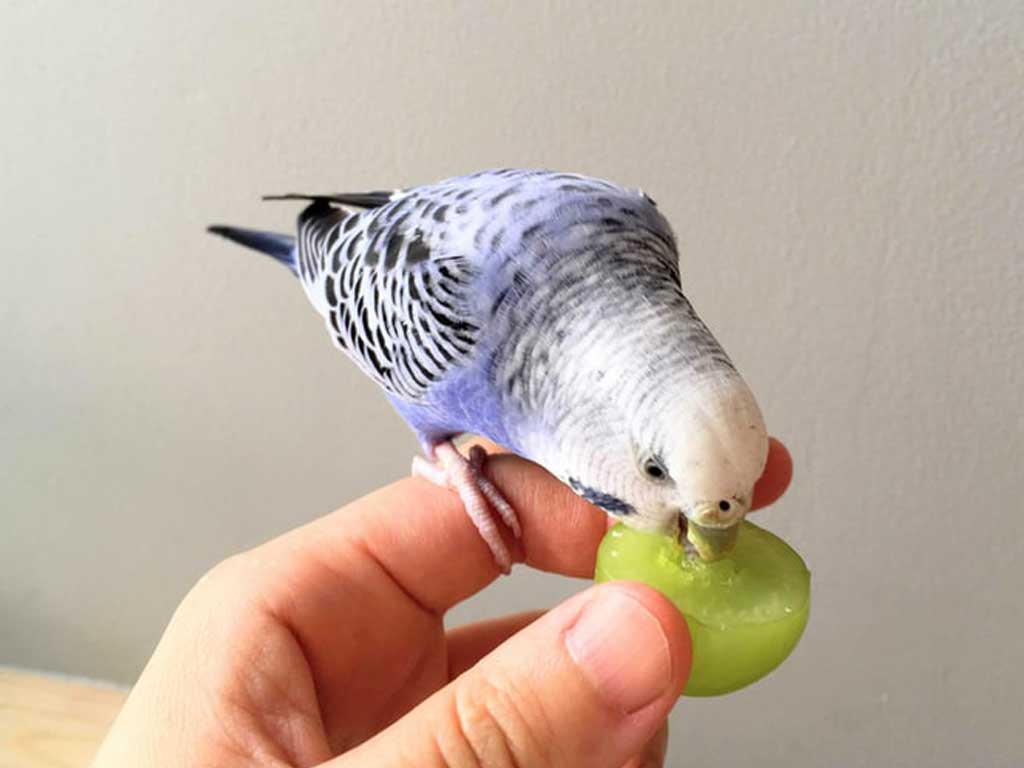In the diverse world of aquarium fish, few silhouettes are as unmistakable as that of the Hatchetfish. With its laterally compressed body and deep, curved chest, its shape perfectly evokes the tool it’s named after. Native to the calm basins of Central and South America, especially the Amazon, these fish are the undisputed kings of the surface. Watching a shoal of Hatchetfish patrol the upper zone of the tank is a spectacle of elegance and unique behavior.
But their most legendary trait isn’t their shape; it’s their astonishing ability to jump, gliding out of the water as if attempting to fly. This characteristic, along with their peaceful yet timid nature, makes them a wonderful addition to the right aquarium, but a potential disaster for the unprepared hobbyist. In this complete guide, we will explore all the secrets to keeping these aquatic acrobats healthy and happy, from the escape-proof setup of their aquarium to their specialized diet and ideal tank mates.
Common Hatchetfish Species
Although several species exist, two dominate the hobby for their beauty and availability:
- Carnegiella strigata (Marbled Hatchetfish): This is perhaps the most popular. Its silvery body is adorned with a pattern of dark spots and lines, giving it a unique and very attractive marbled appearance. It is slightly smaller and more delicate.
- Gasteropelecus sternicla (Silver Hatchetfish): Larger and more robust, its body is a uniform, brilliant silver color that reflects light spectacularly. It is an excellent choice to start with this type of fish.
Occasionally, one might find the Giant Hatchetfish (Thoracocharax securis), which can reach 3 inches (8 cm) and requires a larger aquarium.
The Ideal Aquarium: A Safe Aquatic Sky
Creating the perfect home for a Hatchetfish centers on two key concepts: surface security and water stability.
The Golden Rule: An Escape-Proof Aquarium!
This is the most critical and non-negotiable point. Hatchetfish are anatomically designed to jump. Their large pectoral fins are anchored to powerful muscles that allow them to propel themselves out of the water to escape predators, capable of gliding distances of up to 10 feet (3 meters). Any aquarium housing Hatchetfish must have a tight-fitting lid with no gaps. Even a minimal opening is an invitation to find them dried up on the floor.
Size and Water Parameters
They are gregarious fish that need surface area.
| Parameter | Ideal Range | Notes |
| Aquarium Size | 20 gallons (80 liters) minimum | Length is more important than height. |
| Temperature | 24°C – 28°C (75°F – 82°F) | Standard for Amazonian tropical fish. |
| pH | 6.0 – 7.0 | They prefer soft, slightly acidic water. |
| Hardness (GH) | 2 – 14 dGH | They do not tolerate very hard water. |
| Nitrates | < 25 ppm | Sensitive to poor water quality. |
Decor and Floating Plants
Although they need a clear surface for swimming, they feel much more secure if they have cover. The use of floating plants like Water Lettuce (Pistia stratiotes) or Amazon Frogbit (Limnobium laevigatum) is highly recommended. These plants dim the light, offer them refuge, and reduce their stress and tendency to jump. The rest of the aquarium can be decorated with driftwood and plants that recreate an Amazonian biotope.
Behavior and Coexistence: A Peaceful but Timid Neighbor
Hatchetfish are the epitome of a peaceful shoaling fish. They must be kept in groups of at least 5-6 individuals to feel secure. A solitary hatchetfish will live stressed and hidden.
They spend 100% of their time in the upper third of the aquarium. Their nature is timid and easily frightened, so the choice of tank mates is crucial.
- Ideal Tank Mates: Peaceful fish that occupy the middle and lower zones of the aquarium. Good options include:
- Small, peaceful Tetras (Neon, Cardinal, Rummy-nose).
- Dwarf cichlids like Apistogramma or Rams.
- Corydoras and Ancistrus for the bottom.
- Tank Mates to Avoid:
- Very active or aggressive fish that would stress them (Barbs, Danios).
- Large fish that could see them as prey.
- Other very voracious surface-dwelling fish that would aggressively out-compete them for food.
Surface Feeding: The Hatchetfish Diet
Their upward-facing mouth is perfectly adapted for eating from the surface. They will not go down to the bottom to look for food. Therefore, their food must float.
- Base Diet: High-quality flakes or floating micro-granules should form the basis of their diet.
- Supplements: They are primarily carnivorous. They will greatly appreciate freeze-dried or frozen food like mosquito larvae, daphnia, or brine shrimp.
- Live Food: Small insects like fruit flies are a delicacy that stimulates their natural hunting behavior.
- Caution: They will prey on very small fish fry (like guppy fry) that swim near the surface.
The Breeding Challenge: Nearly Impossible at Home
Breeding Hatchetfish in captivity is extremely rare and considered an achievement for experts only. They are egg-scatterers among fine-leaved or floating plants, but they show no parental care whatsoever. In fact, they will eat their own eggs and fry without hesitation.
To have any chance, a specific breeding tank would be required, with highly controlled water parameters (very soft and acidic), and the parents would need to be removed immediately after spawning. The fry are minuscule and would need an initial diet of infusoria or plankton.
The Hatchetfish is, without a doubt, one of the most unique and elegant additions for an Amazonian biotope aquarium. Its unmistakable shape and surface-dwelling behavior make it a fascinating focal point. While their care is not complex, it demands meticulous attention from the aquarist to three golden rules: an infallible lid, the company of a shoal, and a diet that floats. By meeting these requirements, you can enjoy for years the serene and acrobatic ballet that these wonderful fish perform just below the sky of your aquarium.
FAQs
Why did my Hatchetfish jump out of the aquarium?
Jumping is their primary defense mechanism. They do it instinctively, especially if they get scared or feel insecure. It is absolutely essential to have a tight-fitting lid with no gaps to prevent this.
What do they eat if they don’t go to the bottom of the tank?
Their food must float. Feed them flakes, fine floating granules, and freeze-dried or frozen foods that remain on the surface long enough for them to eat.
Can they live with Angelfish or Guppies?
They can live with Angelfish if the aquarium is large and the angelfish are not overly aggressive. They are compatible with adult Guppies, but the Hatchetfish will prey on any guppy fry that swim near the surface.
Do they need to be kept in a group?
Yes, it’s essential. They are shoaling fish, and a solitary individual will live stressed, shy, and be more prone to disease. A group of at least 5-6 is recommended.
Why are they always at the top of the tank?
It is their natural ecological niche. Their entire anatomy, from their body shape to the position of their mouth, is adapted to live and feed just below the water’s surface.










